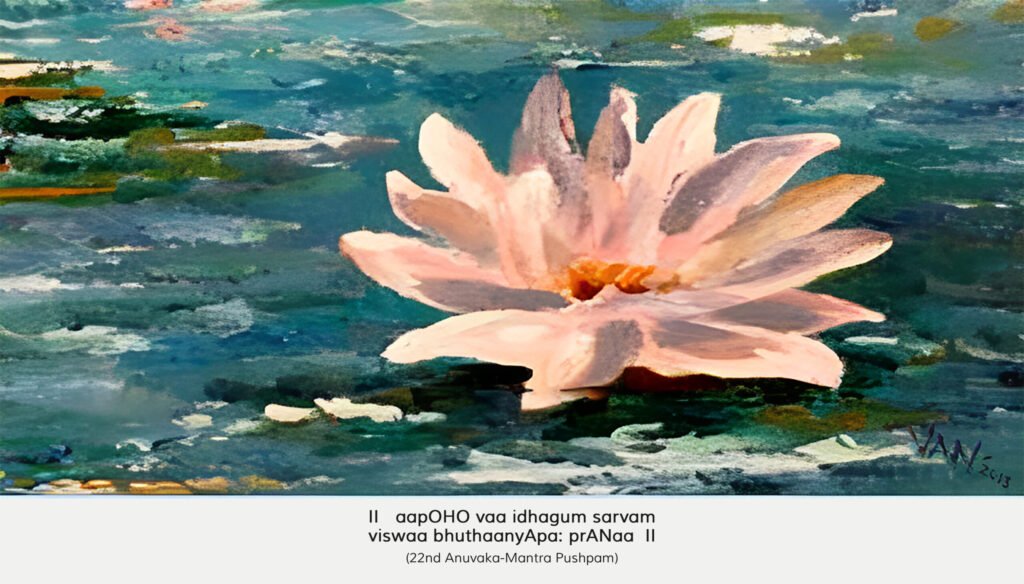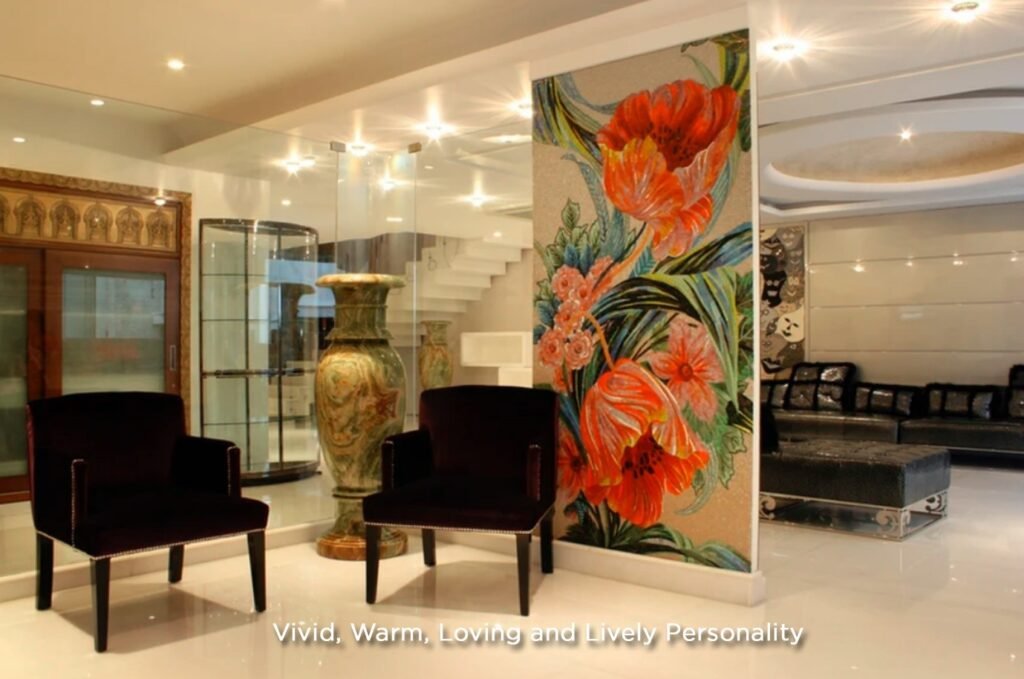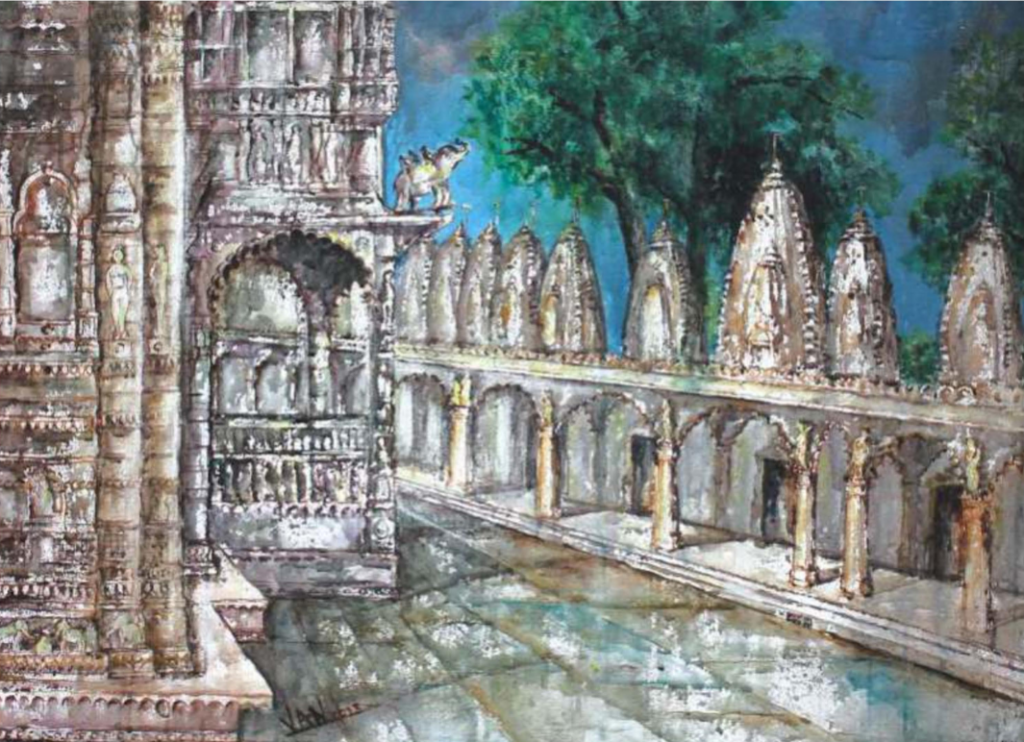The assertion by renowned Japanese architect Kenzo Tange that “modern architecture need not be Western” is more than just a provocative statement—it is a rallying cry for cultural identity, architectural plurality, and the decolonization of design ideology. As architecture evolved in the 20th century, modernism—often equated with sleek glass boxes, concrete slabs, and steel frames—came …
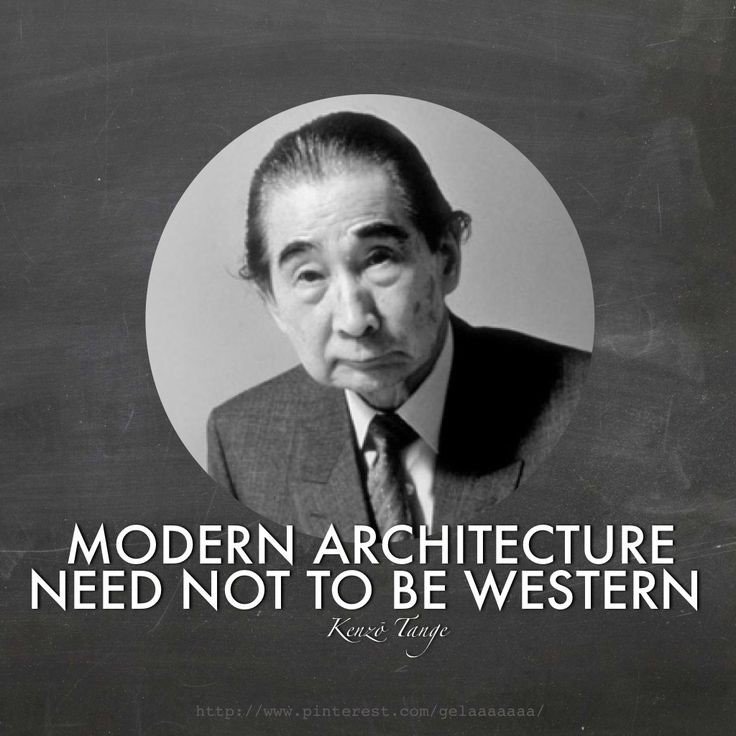
Table of Contents
- Context: Post-War Japan and the Quest for Identity
- Tradition as Foundation, Not Ornament
- Reinterpreting Tradition
- The Metabolist Vision: Toward an Indigenous Modernity
- Shizuoka Press and Broadcasting Center (1967)
- The Global Icon: Yoyogi National Gymnasium
- The Principles of Non-Western Modernism
- Influence Beyond Japan
- Lessons for Contemporary Architects
- Conclusion
The assertion by renowned Japanese architect Kenzo Tange that “modern architecture need not be Western” is more than just a provocative statement—it is a rallying cry for cultural identity, architectural plurality, and the decolonization of design ideology. As architecture evolved in the 20th century, modernism—often equated with sleek glass boxes, concrete slabs, and steel frames—came to be viewed as a predominantly Western narrative, shaped by figures like Le Corbusier, Mies van der Rohe, and Walter Gropius. But Tange challenged this perception, arguing that modernism was not a style but a methodology, one that could be localized, reinterpreted, and fused with indigenous traditions.
This essay explores the meaning and implications of Tange’s assertion through his work and philosophy. From an architect’s perspective, it unpacks how modern architecture can embody local culture without becoming pastiche, how tradition and technology can co-exist, and how the principles of modernism can be adapted rather than adopted wholesale.
Context: Post-War Japan and the Quest for Identity
In the aftermath of World War II, Japan faced the monumental task of rebuilding not only its cities but its national identity. It was in this crucible of trauma and transformation that Kenzo Tange emerged. Educated in both traditional Japanese design and Western modernism, Tange was uniquely positioned to synthesize the two. He did not reject Western ideas; rather, he sought to reinterpret them through a Japanese lens.
In Tange’s own words, modern architecture is “an expression of contemporary life.” Therefore, it should evolve in tandem with the cultural, social, and technological contexts of a region. He believed modern architecture should not be dictated by geography but should instead reflect the spirit of place—genius loci—through new forms, materials, and functions.
Tradition as Foundation, Not Ornament
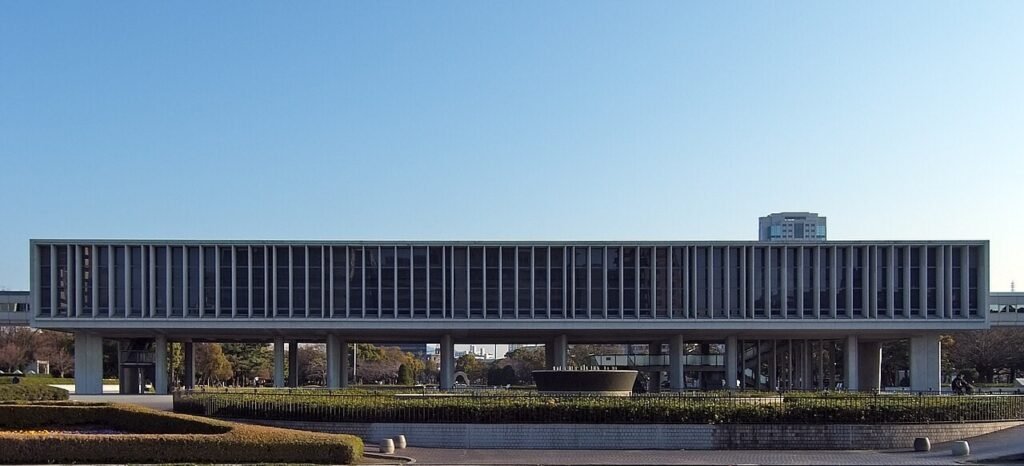
One of the most revolutionary aspects of Tange’s approach was his insistence that tradition must not be viewed as a set of fixed stylistic elements but rather as a system of ideas. Unlike those who viewed traditional architecture as incompatible with modernity, Tange saw it as a wellspring of inspiration.
Reinterpreting Tradition
Take, for instance, the Hiroshima Peace Memorial Museum (1955), one of Tange’s earliest masterpieces. The building’s use of concrete and modern structural systems might suggest a Western influence, but its elevated structure on pilotis and its axial symmetry recall the architectural composition of traditional Japanese temples. The rhythmic spacing of columns evokes the wooden post-and-beam system (ken) used in Japanese shrines, while the stark materiality speaks to the harsh realities of post-war life. The result is not mimicry of the West, but a translation of traditional Japanese architectural logic into the modern language.
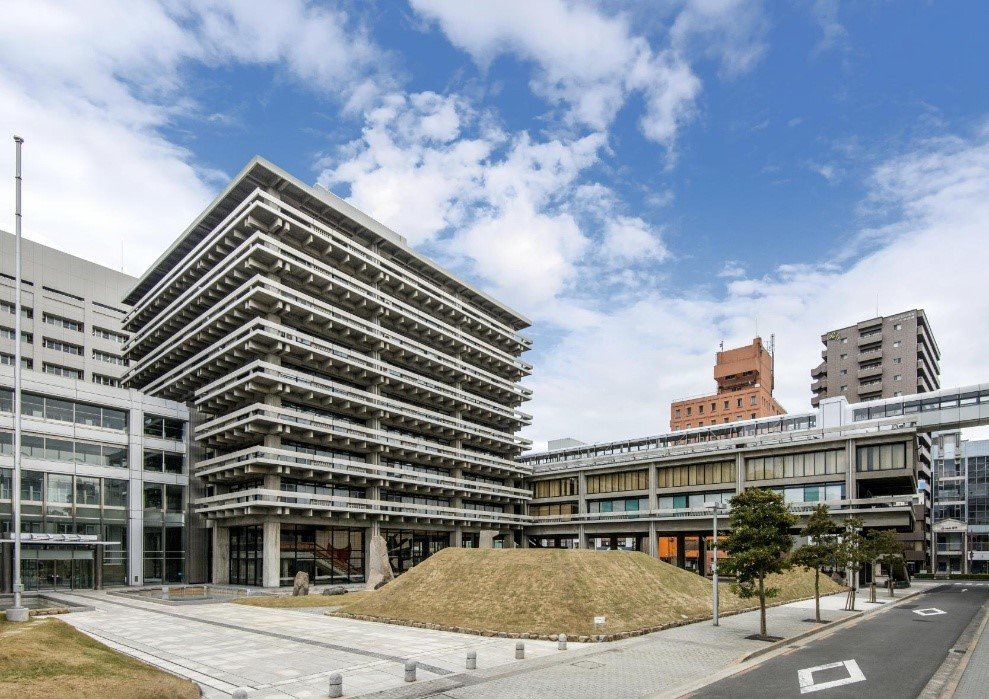
Similarly, the Kagawa Prefectural Government Office (1958) showcases Tange’s fusionist philosophy. The structure’s reinforced concrete skeleton is unmistakably modern, yet the spatial hierarchy and proportions are rooted in Japanese design principles. The integration of traditional aesthetics into a modern civic building challenged the notion that modernism had to erase the past in order to be valid.
The Metabolist Vision: Toward an Indigenous Modernity
Tange’s influence extended beyond his own practice to an entire movement: the Metabolists, a group of Japanese architects and urban theorists who envisioned cities as living, evolving organisms. As their mentor and ideological anchor, Tange provided the theoretical foundation for a modernism that was deeply local in spirit but global in ambition.
Shizuoka Press and Broadcasting Center (1967)
Perhaps the most tangible realization of this vision is the Shizuoka Press and Broadcasting Center, which features a central concrete core around which modular office units are arranged. This plug-in system reflects both the flexibility of modernist planning and the modularity found in traditional Japanese homes. It’s a nod to the tatami-mat-based planning system, which has governed Japanese residential architecture for centuries.
The building doesn’t attempt to look Japanese in a literal sense. There are no shoji screens or pagoda roofs. Instead, it reflects Japanese-ness through its logic of organization, its respect for space and modularity, and its adaptability—qualities intrinsic to both modernist and traditional design.
The Global Icon: Yoyogi National Gymnasium
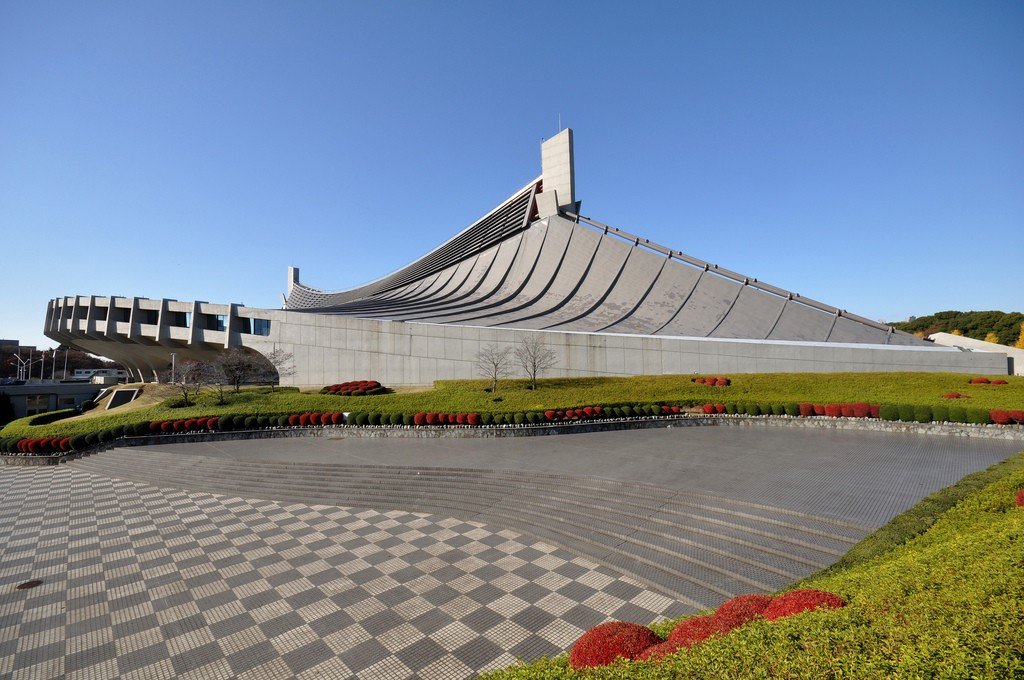
Arguably, Tange’s most internationally acclaimed work is the Yoyogi National Gymnasium (1964), built for the Tokyo Olympics. The building’s swooping, suspension-cable roof structure might initially suggest the influence of Western engineering pioneers like Eero Saarinen. However, its form also draws from the sweeping eaves of traditional Japanese temples and the spatial grandeur of religious architecture.
Yoyogi is a masterclass in spatial drama, technical innovation, and cultural resonance. It’s modern, yes—but unmistakably Japanese in spirit. The structure does not imitate traditional architecture; it evokes it through proportion, movement, and material expression. It was a building that spoke to the world in the international language of modernism, but with a distinctly Japanese accent.
The Principles of Non-Western Modernism
Tange’s philosophy was not just about fusing tradition and modernity—it was about creating a methodology that could be applied across cultures. Here are some key principles derived from his approach:
1. Start with Cultural DNA
Tange’s modernism was not a cookie-cutter import. He delved deeply into Japan’s architectural and cultural heritage—its modular planning, relationship with nature, and emphasis on human scale. He believed that understanding these cultural underpinnings was essential before one could innovate meaningfully.
2. Material Honesty with Local Relevance
Concrete, glass, and steel were Tange’s materials of choice, but he used them in ways that reflected traditional Japanese craftsmanship. The careful detailing of concrete formwork, for example, mimicked the precision of traditional joinery. He translated the soul of wood into the language of concrete.
3. Dynamic Scale and Spatial Continuity
Tange understood space as a continuum, a concept deeply rooted in Japanese architecture. From the intimate scale of a tea house to the civic grandeur of a government complex, he designed with sensitivity to the human experience. He often integrated indoor and outdoor spaces seamlessly, reinforcing the traditional Japanese view of architecture as part of a larger natural order.
4. Adaptability and Change
One of the hallmarks of traditional Japanese architecture is its adaptability—spaces that can change function through sliding screens or modular layouts. Tange brought this spirit into his modern work, often designing buildings with flexible configurations and the ability to evolve over time—a precursor to the sustainable design philosophies we embrace today.
Influence Beyond Japan
Tange’s approach resonated globally. Architects in Asia, Africa, and the Middle East found inspiration in his ability to fuse modernism with local tradition. In India, Charles Correa took a similar path, grounding modern architecture in Indian spatial traditions. In Africa, architects like Demas Nwoko experimented with vernacular forms and materials within modern frameworks.
Tange proved that the modernist project didn’t have to be Eurocentric. By rooting architecture in local contexts—both cultural and environmental—he made it clear that there are many ways to be modern.
It is worth acknowledging that not all of Tange’s projects were universally lauded. Some critics felt that his later work—such as the Tokyo Metropolitan Government Building—drifted too far into monumentalism, becoming more about symbolism than human experience. Others argued that his early works were still too reliant on Western techniques and aesthetics.
However, these criticisms only underscore the challenges inherent in creating a truly hybrid architecture. Navigating the space between tradition and innovation, local and global, is never easy. But Tange’s career was marked by an ongoing commitment to that very balance. Even when his buildings appeared highly futuristic, they remained grounded in context—a rare feat in the modernist canon.
Lessons for Contemporary Architects
In an era of globalized architecture, where glass towers from Dubai to Shanghai often resemble those in London or New York, Tange’s legacy is more relevant than ever. His work offers a blueprint for resisting architectural homogenization. Here are a few takeaways for today’s practitioners:
- Don’t confuse modern with Western. Modernism is a set of tools, not a fixed style.
- Study your roots. Know your local culture, materials, and spatial traditions before reaching for the latest parametric software.
- Think in systems. Like Tange and the Metabolists, envision buildings and cities that evolve over time.
- Balance innovation with empathy. Build for people, not just for skylines.
Conclusion
Kenzo Tange’s declaration that “modern architecture need not be Western” is not just an architectural opinion—it’s a philosophical stance on cultural independence, spatial identity, and the future of global design. Through his body of work and his theoretical contributions, Tange demonstrated that it is not only possible—but essential—for modern architecture to be rooted in local culture and responsive to its context.
Modernism, in Tange’s hands, became a living language—one that could be spoken in Japanese, Indian, African, or Latin American dialects. He showed the world that we need not erase our past to build our future. Instead, we can build upon it, reinterpret it, and carry it forward with integrity and imagination.
So, to every architect standing at the crossroads of tradition and innovation, Tange’s message is clear: be modern, yes—but be unapologetically you.



